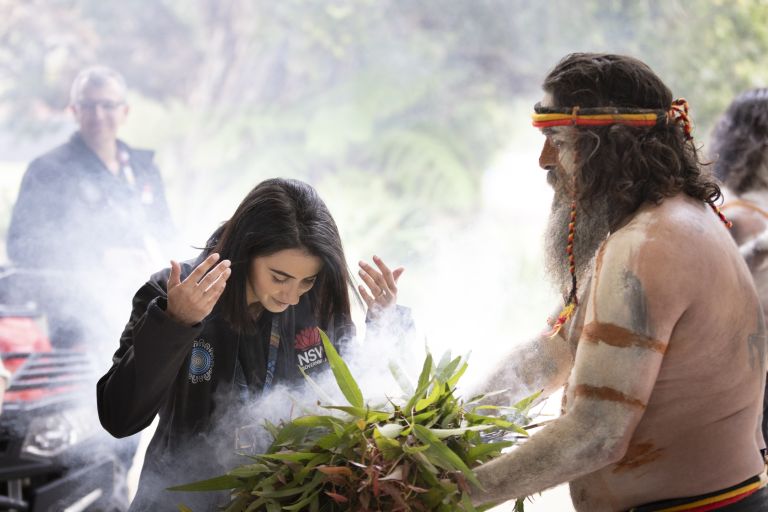Acknowledgement
Aboriginal Affairs NSW acknowledges the Traditional Custodians of the lands where we work and the places in which we live. We pay respect to Ancestors and Elders past and present. We recognise the unique cultural and spiritual relationship and celebrate the contributions of First Nations peoples to Australia.
The Aboriginal Land Rights Act 1983 (ALRA)
The ALRA provides a system for Aboriginal communities to regain ownership of certain lands in NSW.
The ALRA recognises the traditional ownership of the land by Aboriginal peoples. It acknowledges the importance of their connection to the land. This connection is spiritual, social, cultural, and economic.
The ALRA acknowledges that past governments have progressivly reduced Aboriginal land without payment. It also recognises the rights of Aboriginal people and enables self determination.
Aboriginal communities in NSW can claim land through Aboriginal Land Councils (ALC's). ALC's oversee the land on behalf of communities to deliver positive outcomes. They are groups of elected Aboriginal peoples over 18 years old.
Aboriginal Affairs works to support Aboriginal land justice action. The Minister of Aboriginal Affairs adminsiters the Act.
The Minister responsible for the Crown Land Management Act 2016 approves land claims.

The ‘U’ shapes in the artwork are representative of people – man and woman – with the shape the indent in the earth when sitting crossed legged. In each instance, the figures move through Country and its varying landscapes – the rivers, the plains, the mountains and the sea. The figures are deliberately placed ‘in Country,’ – highlighting the spiritual connection between people and the land. The colours chosen for the artwork depict a different landscape – as well, as earth, water, air and fire. The distinctive dots represent the natural landscape, connecting the people to the stories of the Dreamtime and reinforcing the cultural value of the land. The straight lines are included to represent the journey travelled on Country between camps, with the squiggly lines indicative of the water travelled through. At the bottom, the circular symbol is drawn to represent people coming together around the table, with the radiating dots suggestive of energy, and also of the aura of the land and its importance to First Nations People.
Aboriginal Land Rights Act 1983 (ALRA)
Find out more about the ALRA and how it is governed and administrated.
Photography by Peter Stoop for Aboriginal Affairs NSW.
Image

Land claims
Aboriginal communities in NSW can claim land through Aboriginal Land Councils. The NSW Aboriginal Land Council (NSWALC), with assistance from the Office of the Registrar, has developed a helpful guide to the land claim process.
Image

NSW Aboriginal Land Councils
The NSW Aboriginal Land Council (NSWALC) manages the network of 121 Local Aboriginal Land Councils (LALC) that represent Aboriginal communities across NSW.
Image

Crown Lands
Aboriginal land councils can lodge Aboriginal land claims for ownership of some Crown land. Crown Lands facilitates the return of eligible land to Aboriginal land councils. Land claims are assessed and, if a claim is successful, transfers land ownership.
Registrar’s office
The Registrar helps maintain the ALRA Registers, approving rules for land councils and compliance.
Aboriginal Land Agreements
ALAs can settle multiple land claims at the same time, rather than determining claims one at a time. These agreements can also include payments, and land swaps that may include transfers of unclaimed Crown land.
Land rights history
A timeline of significant events in the history of the Aboriginal Land Rights Act, 1983.
Hunting, fishing, and gathering permits
Access to land for Aboriginal people to hunt, fish or gather can be negotiated by Local Aboriginal Land Councils (LALCs). Any agreements must not break any other laws, rules, or regulations.
When agreements cannot be negotiated, access permits may be issued by the Land and Environment Court. The process to get a permit from the court is set out in section 48 of the Aboriginal Land Rights Act 1983. Note Aboriginal Affairs NSW do not have a statutory function or ability to support LALCs seeking an access agreement or associated permit.

ALRA Education and Training
The ALRA Education and Training Program aims to transform the current land claims process. It uplifts understanding, practice and knowledge of the ALRA in Government agencies who process land claims. Find out more about completing the training.

Contact Aboriginal Affairs
Office address: Level 6, 201 Coward Street, Mascot NSW 2020
Postal address: PO Box 207, Mascot NSW 2020
